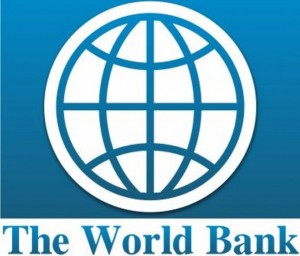World Bank launches landmark pandemic financing facility
 The World Bank has launched the Pandemic Emergency Financing Facility (PEF) – a landmark financing facility to protect the poorest countries against pandemics, creating the first-ever insurance market for pandemic risk.
The World Bank has launched the Pandemic Emergency Financing Facility (PEF) – a landmark financing facility to protect the poorest countries against pandemics, creating the first-ever insurance market for pandemic risk.
The Bank announced in a statement that Japan, which holds the G7 Presidency, has committed the first $50 million to fund the new initiative which comes after G7 leaders urged the Bank to develop it during their May 2015 summit in Schloss-Elmau, Germany.
According to the Bank, the Ebola crisis in West Africa which affected the economies of Guinea, Liberia and Sierra Leone, cost them about $2.8 billion in GDP loss and four global expert panels convened over the past year in the wake of the crisis, concluded that the world must urgently step up its capacity for a swift response to outbreaks before they become more deadly and costly pandemics.
If the Pandemic Emergency Financing Facility had existed in mid-2014 as the Ebola outbreak was spreading rapidly in West Africa, the World Bank said it could have mobilized an initial $100 million as early as July to severely limit the spread and severity of the epidemic.
Instead, money of that scale did not begin to flow until three months later, during which period, the number of Ebola cases increased tenfold.
The PEF, built and designed in collaboration with the World Health Organization (WHO) and the private sector, is expected to be available later this year and to all the 77 countries eligible for financing from the International Development Association (IDA) – the World Bank Group’s fund for the poorest countries.
The World Bank’s statement explained: “The PEF includes an insurance window, which combines funding from the reinsurance markets with the proceeds of World Bank-issued pandemic (catastrophe, or Cat) bonds, as well as a complementary cash window. This will be the first time World Bank Cat Bonds have been used to combat infectious diseases. In the event of an outbreak, the PEF will release funds quickly to countries and qualified international responding agencies.”
“The insurance window will provide coverage up to $500 million for an initial period of three years for outbreaks of infectious diseases most likely to cause major epidemics, including new Orthomyxoviruses (e.g. new influenza pandemic virus A, B and C), Coronaviridae (e.g. SARS, MERS), Filoviridae (e.g. Ebola, Marburg) and other zoonotic diseases (e.g. Crimean Congo, Rift Valley, Lassa fever). Parametric triggers designed with publicly available data will determine when the money would be released, based on the size, severity and spread of the outbreak.”
“The complementary cash window will provide more flexible funding to address a larger set of emerging pathogens, which may not yet meet the activation criteria for the insurance window.”
World Bank President Jim Yong Kim said: “Pandemics pose some of the biggest threats in the world to people’s lives and to economies, and for the first time we will have a system that can move funding and teams of experts to the sites of outbreaks before they spin out of control.”
“This facility addresses a long, collective failure in dealing with pandemics. The Ebola crisis in Guinea, Liberia and Sierra Leone taught all of us that we must be much more vigilant to outbreaks and respond immediately to save lives and also to protect economic growth.”
Emmanuel Odonkor
